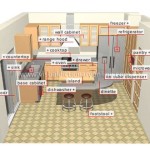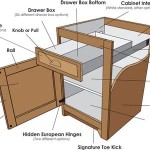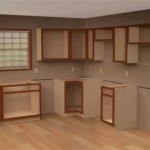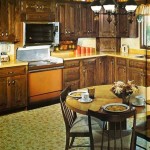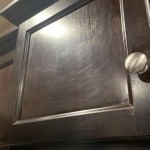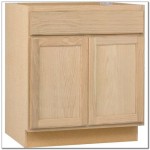Hickory Kitchen Cabinet Knobs: A Comprehensive Guide
Hickory, a hardwood renowned for its strength, durability, and distinctive grain patterns, is a popular choice for kitchen cabinetry. While the cabinet doors and frames often receive the most attention, the hardware, specifically the knobs, play a crucial role in both functionality and aesthetics. Hickory kitchen cabinet knobs offer a unique blend of natural beauty and enduring performance, making them a compelling option for homeowners seeking to elevate their kitchen design.
This article explores the characteristics of hickory wood, the various styles and finishes available for hickory kitchen cabinet knobs, factors to consider when selecting these knobs, and installation and maintenance tips. We aim to provide a comprehensive understanding of this valuable hardware option, enabling informed decisions for kitchen renovations and upgrades.
Understanding Hickory Wood
Hickory belongs to the genus Carya and is a native hardwood of North America. It is characterized by its exceptional hardness and density, often exceeding that of oak and maple. This inherent strength makes hickory a resilient material capable of withstanding the rigors of daily use in a high-traffic area like the kitchen. Its durability translates into long-lasting cabinet knobs that resist wear and tear, maintaining their integrity over time.
The grain pattern of hickory is another defining characteristic. It typically features a prominent, contrasting grain with variations ranging from straight to wavy. This natural variation contributes to the unique character of each knob, ensuring that no two are exactly alike. The wood's color ranges from light to medium brown, often with reddish or yellowish undertones. This versatility allows hickory to complement a wide range of kitchen color schemes and design styles.
Hickory is also known for its shock resistance, making it less prone to splitting or cracking under pressure. This characteristic is particularly beneficial for cabinet knobs, which are subjected to repeated pulling and pushing. The wood’s ability to absorb impact helps to preserve its structural integrity and prolong its lifespan.
Furthermore, hickory is a relatively sustainable wood source, as it is readily available and actively managed in many forests across North America. Choosing hickory cabinet knobs can be an environmentally conscious decision, supporting responsible forestry practices.
Styles and Finishes of Hickory Kitchen Cabinet Knobs
Hickory kitchen cabinet knobs are available in a wide array of styles, catering to diverse aesthetic preferences. The selection process should consider the overall design of the kitchen, the style of the cabinetry, and the desired level of formality or informality.
Traditional Knobs:
These knobs often feature classic shapes such as round, oval, or mushroom designs. They may incorporate decorative elements like carvings, ridges, or beveled edges. A traditional style hickory knob often pairs well with raised-panel cabinet doors and a more formal kitchen setting. These are typically finished with a stain that accentuates the natural grain of the hickory and then topped with a protective clear coat.Contemporary Knobs:
Sleek and minimalist, contemporary hickory knobs often feature clean lines, geometric shapes, and a simplified design. Square, rectangular, or cylindrical knobs are common choices. The focus is on functionality and understated elegance. A contemporary style hickory knob is often paired with flat-panel cabinet doors and stainless steel appliances. Finishes may include natural, light stains, or even painted options.Rustic Knobs:
Characterized by their natural and unrefined appearance, rustic hickory knobs embrace the imperfections of the wood. Knots, grain variations, and slight irregularities are often intentionally highlighted to create a warm and inviting feel. These knobs may feature a more textured or distressed finish. Rustic knobs are a great choice for farmhouse style kitchens, often paired with beadboard cabinets and exposed brick. They tend to be finished with oils or waxes that bring out the natural beauty of the wood.Novelty Knobs:
For those seeking a more personalized touch, novelty hickory knobs offer a wide range of unique shapes and designs. Animal figures, geometric patterns, or even custom-designed knobs can be crafted from hickory. These knobs can add a playful and memorable element to the kitchen design. These can range widely in style and finish depending on the specific design goals.In addition to style, the finish of the hickory cabinet knob is crucial. The finish not only protects the wood but also influences its appearance and durability. Some common finishes include:
Natural Finish:
This finish preserves the natural color and grain of the hickory. It typically involves a clear sealant or varnish that protects the wood from moisture and wear while allowing its beauty to shine through.Stained Finish:
Stains can be used to enhance or alter the color of the hickory. Lighter stains can highlight the natural grain, while darker stains can create a more dramatic and sophisticated look. A stained finish is then typically sealed with a protective topcoat.Painted Finish:
While less common, hickory cabinet knobs can be painted to match or complement the kitchen's color scheme. A painted finish provides a uniform color and can be chosen to create a modern or whimsical effect. Careful preparation is required for proper adhesion and durability.Oil or Wax Finish:
These natural finishes penetrate the wood, providing a protective layer while enhancing the natural feel and texture. They require periodic reapplication but offer a warm and authentic look.Factors to Consider When Selecting Hickory Kitchen Cabinet Knobs
Choosing the right hickory kitchen cabinet knobs involves careful consideration of several factors to ensure that the selected hardware complements the kitchen design, meets functional requirements, and withstands the test of time.
Size and Proportion:
The size of the cabinet knobs should be proportionate to the size of the cabinet doors and drawers. Larger cabinets may require larger knobs to maintain visual balance. Consider the ergonomic aspect as well; knobs should be easy to grip and operate.Style Compatibility:
The style of the cabinet knobs should complement the overall style of the kitchen. Traditional kitchens benefit from knobs with classic shapes and detailing, while contemporary kitchens often favor sleek and minimalist designs. The knobs should also coordinate with other design elements such as the cabinet door style, countertops, and backsplash.Finish Coordination:
The finish of the cabinet knobs should coordinate with the other hardware finishes in the kitchen, such as the faucet, light fixtures, and appliance pulls. Consistent finishes create a cohesive and polished look. Consider the undertones of the hickory and select finishes that complement the wood's natural color.Functional Requirements:
The cabinet knobs should be easy to grip and operate, especially for individuals with limited dexterity. Consider the shape of the knob and the texture of the finish. Knobs with a smooth, rounded shape are generally easier to grip than knobs with sharp edges or intricate detailing.Durability and Maintenance:
Select hickory cabinet knobs that are made from high-quality wood and finished with a durable coating. A well-made knob will resist wear and tear, maintaining its appearance over time. Consider the maintenance requirements of the finish. Some finishes may require periodic cleaning or reapplication to maintain their luster.Budget:
Hickory cabinet knobs can range in price depending on the size, style, finish, and manufacturer. Establish a budget before beginning the selection process and prioritize the most important factors. Consider the long-term value of the knobs; a durable and well-designed knob may be worth the investment.Mounting Hardware:
Ensure that the cabinet knobs come with the appropriate mounting hardware, including screws of the correct length. The screws should be compatible with the thickness of the cabinet doors and drawers. Using the wrong screws can damage the cabinets or compromise the stability of the knobs.Installation and Maintenance of Hickory Kitchen Cabinet Knobs
Proper installation and regular maintenance are essential for ensuring the longevity and performance of hickory kitchen cabinet knobs. While professional installation is recommended for complex projects, installing knobs is a relatively straightforward task that can be accomplished by homeowners with basic tools and skills.
Installation Guidelines:
1.
Preparation:
Gather the necessary tools, including a drill, screwdriver, measuring tape, pencil, and level. Ensure that you have the correct screws for the thickness of your cabinet doors. 2.Marking:
Use a measuring tape and pencil to mark the desired location for the knob on the cabinet door or drawer. Ensure that the location is consistent across all cabinets. Consider using a template to ensure uniformity. 3.Drilling (if needed):
If the cabinet door does not have pre-drilled holes, use a drill to create a hole at the marked location. Ensure that the drill bit is the correct size for the screws. 4.Attachment:
Insert the screw through the back of the cabinet door and into the knob. Tighten the screw until the knob is securely attached. Avoid over-tightening, which can damage the wood or strip the screws. 5.Alignment:
Use a level to ensure that the knobs are aligned correctly. Adjust the position of the knobs as needed. 6.Testing:
Test the knobs by opening and closing the cabinet doors and drawers. Ensure that the knobs are securely attached and that the doors operate smoothly.Maintenance Tips:
1.
Regular Cleaning:
Clean the hickory cabinet knobs regularly with a soft, damp cloth. Avoid using abrasive cleaners or harsh chemicals, which can damage the finish. 2.Dusting:
Dust the knobs regularly to prevent the buildup of dirt and grime. Use a soft brush or a microfiber cloth. 3.Polishing (if applicable):
For knobs with a polished finish, use a furniture polish specifically designed for wood. Follow the manufacturer's instructions carefully. 4.Tightening Screws:
Periodically check the screws to ensure that they are tight. Loose screws can cause the knobs to wobble or fall off. 5.Addressing Scratches and Dents:
Minor scratches and dents can often be repaired with a touch-up pen or a wood filler. Follow the manufacturer's instructions for the repair product. 6.Protecting from Moisture:
Avoid exposing the hickory cabinet knobs to excessive moisture. Wipe up spills promptly and ensure that the kitchen is well-ventilated. Moisture can damage the wood and cause the finish to deteriorate.By adhering to these installation and maintenance guidelines, you can ensure that your hickory kitchen cabinet knobs remain beautiful and functional for years to come.

Hickory Drawer Pulls And Knobs

Hickory Hardware

Natural Hickory Cabinets Rustic Kitchen Remodel Design

Rustic Furniture Drawer Knobs Kitchen Cabinet Hardware Hickory Wood Pulls

38 Classical Modern Farmhouse Kitchen Decor Ideas Hickory Cabinets New Rustic

Hickory Hardware Hh075341 Skylight 1 4 Sleek Square Cabinet Knob Drawer Gold Com

Hickory Hardware Heritage Designs 1 3 16 In Square Brushed Brass Cabinet Knob Pack Of 10 R077756bbx10b The Home Depot

Hickory Hardware P222 Tranquility 1 4 Mushroom Cabinet Knob Brown Com

Hickory Hardware Karat 1 4 In Dia Matte Black Cabinet Knob 10 Pack H077839mb 10b The Home Depot

Ina Hickory Kitchen Cabinets Rta Cabinet
Related Posts

